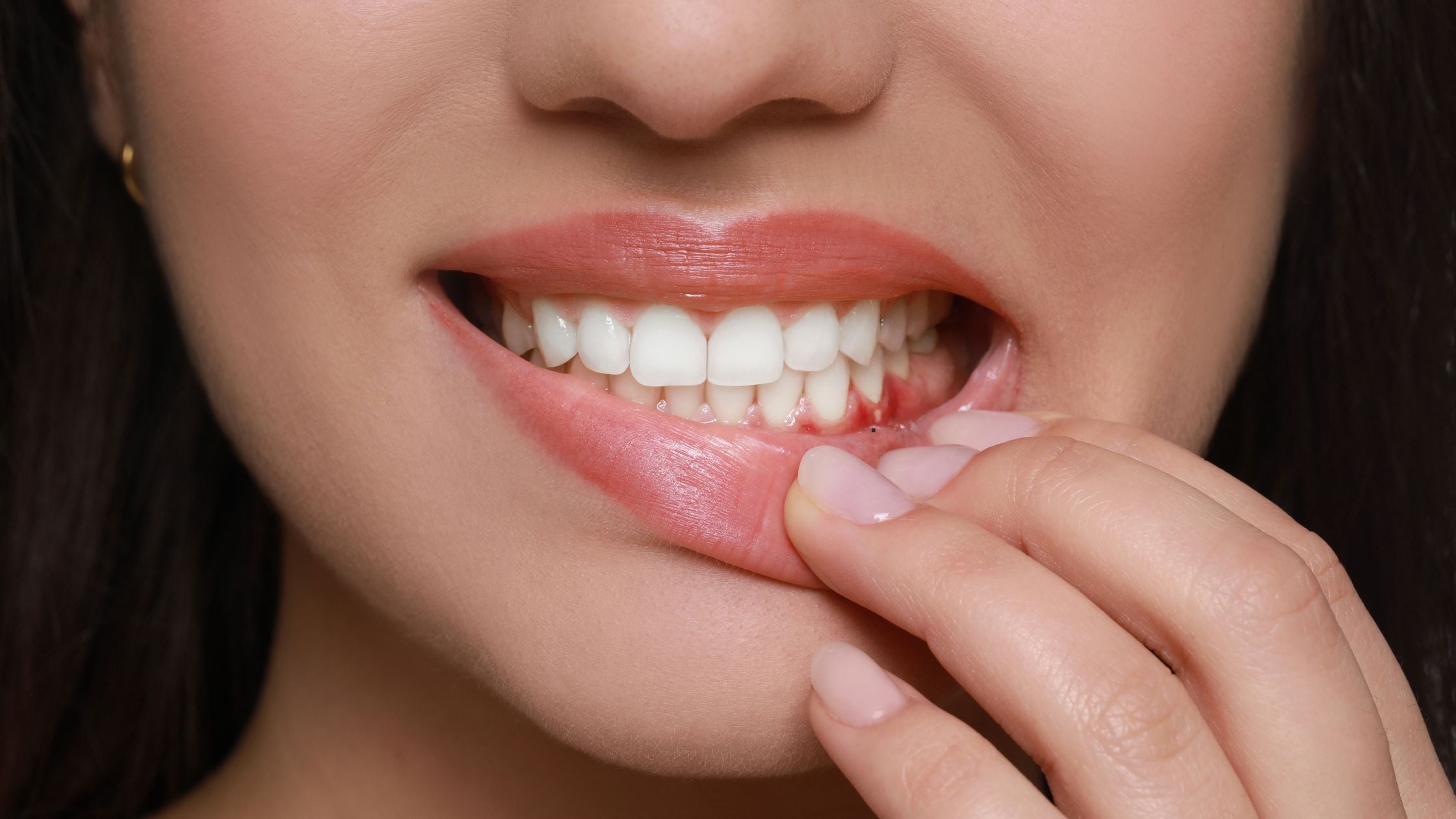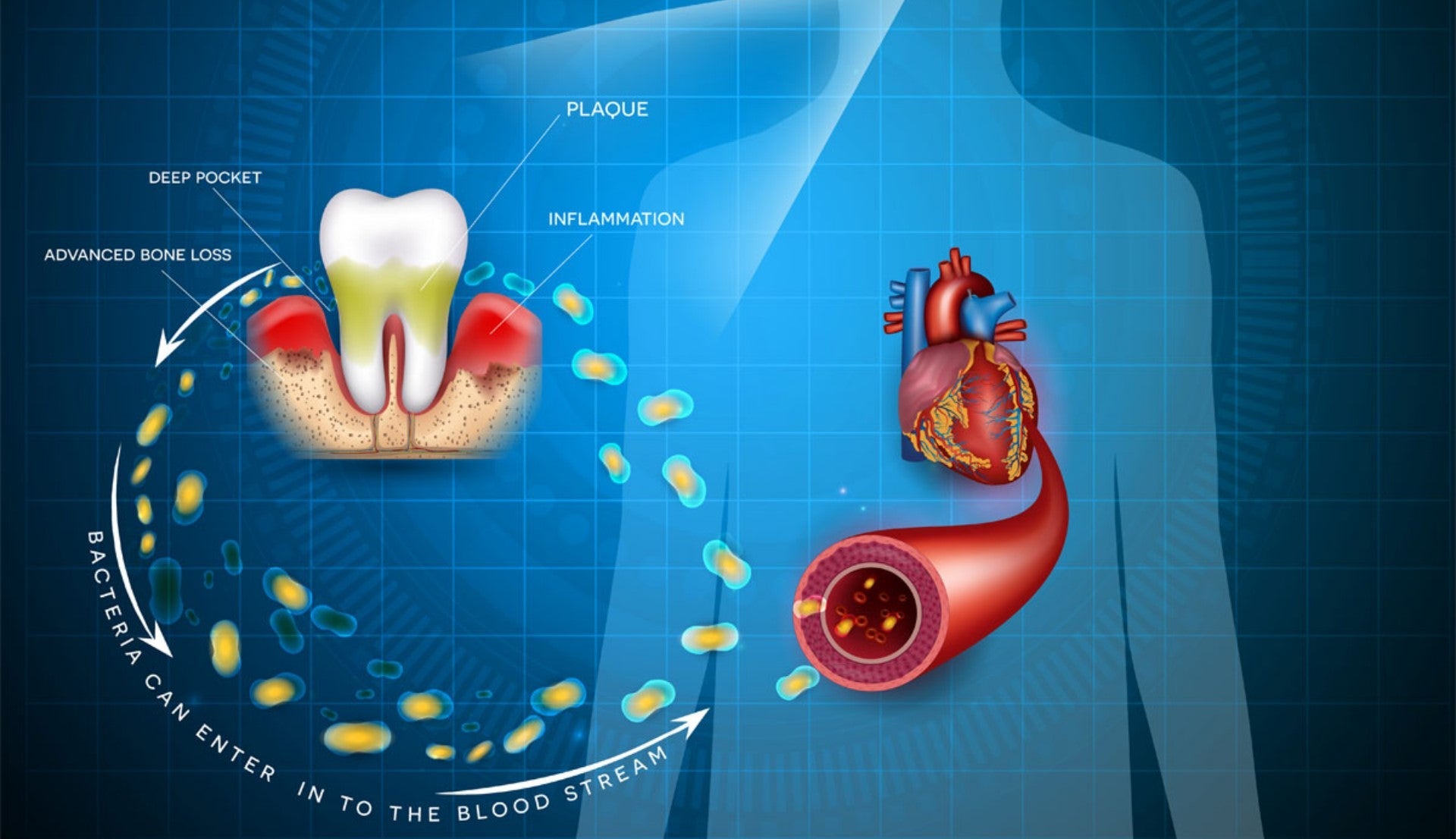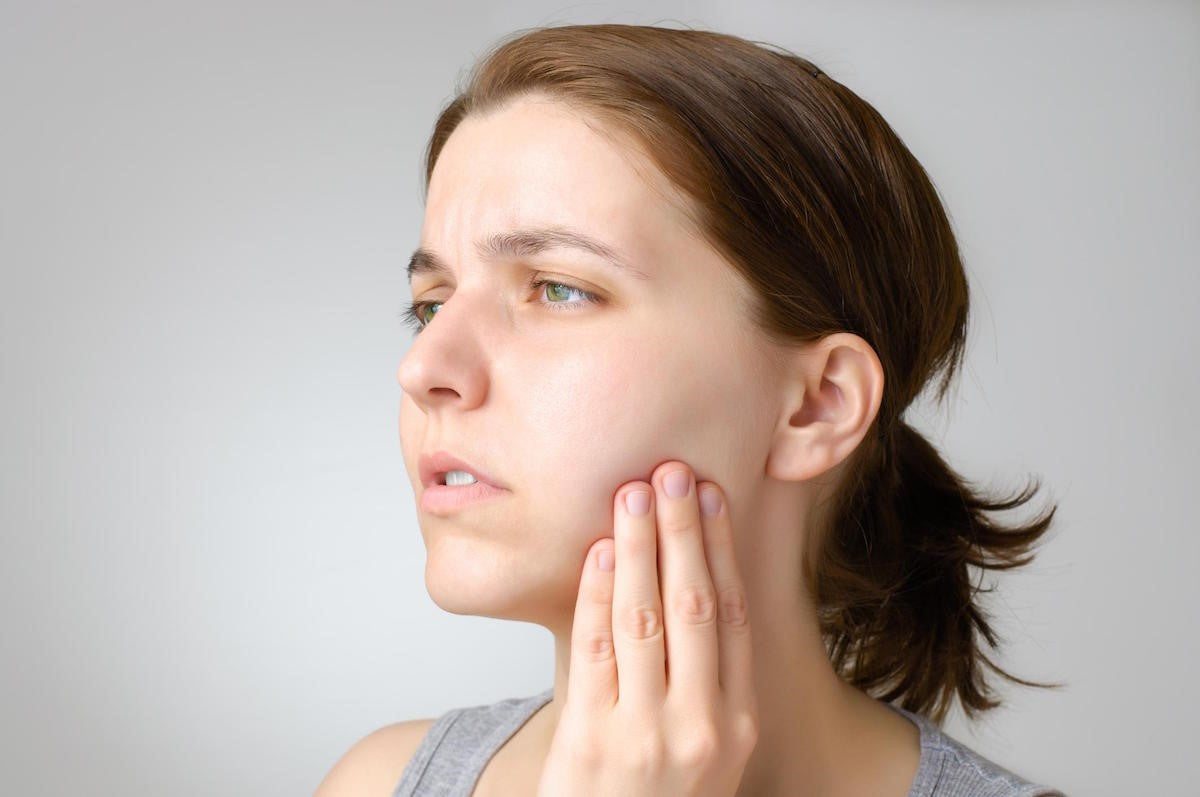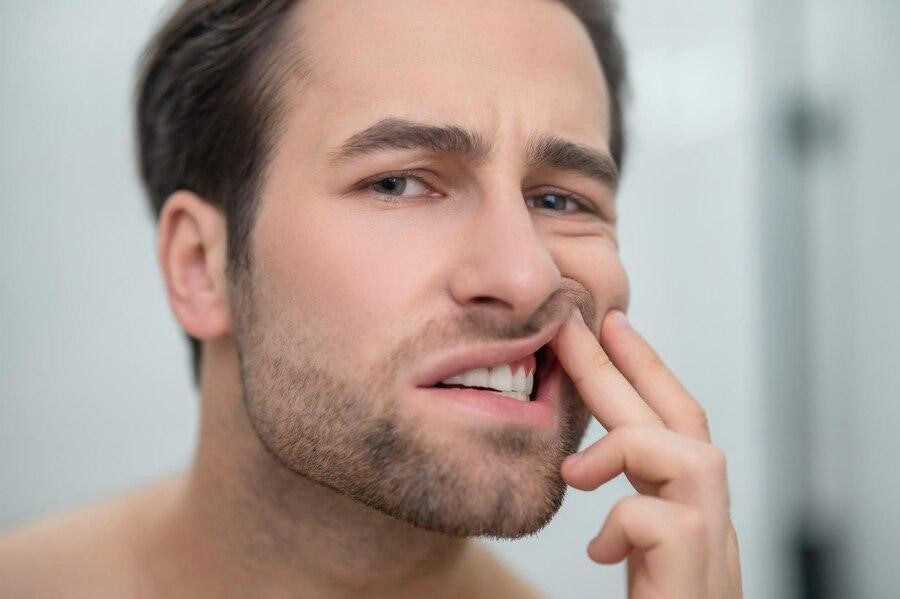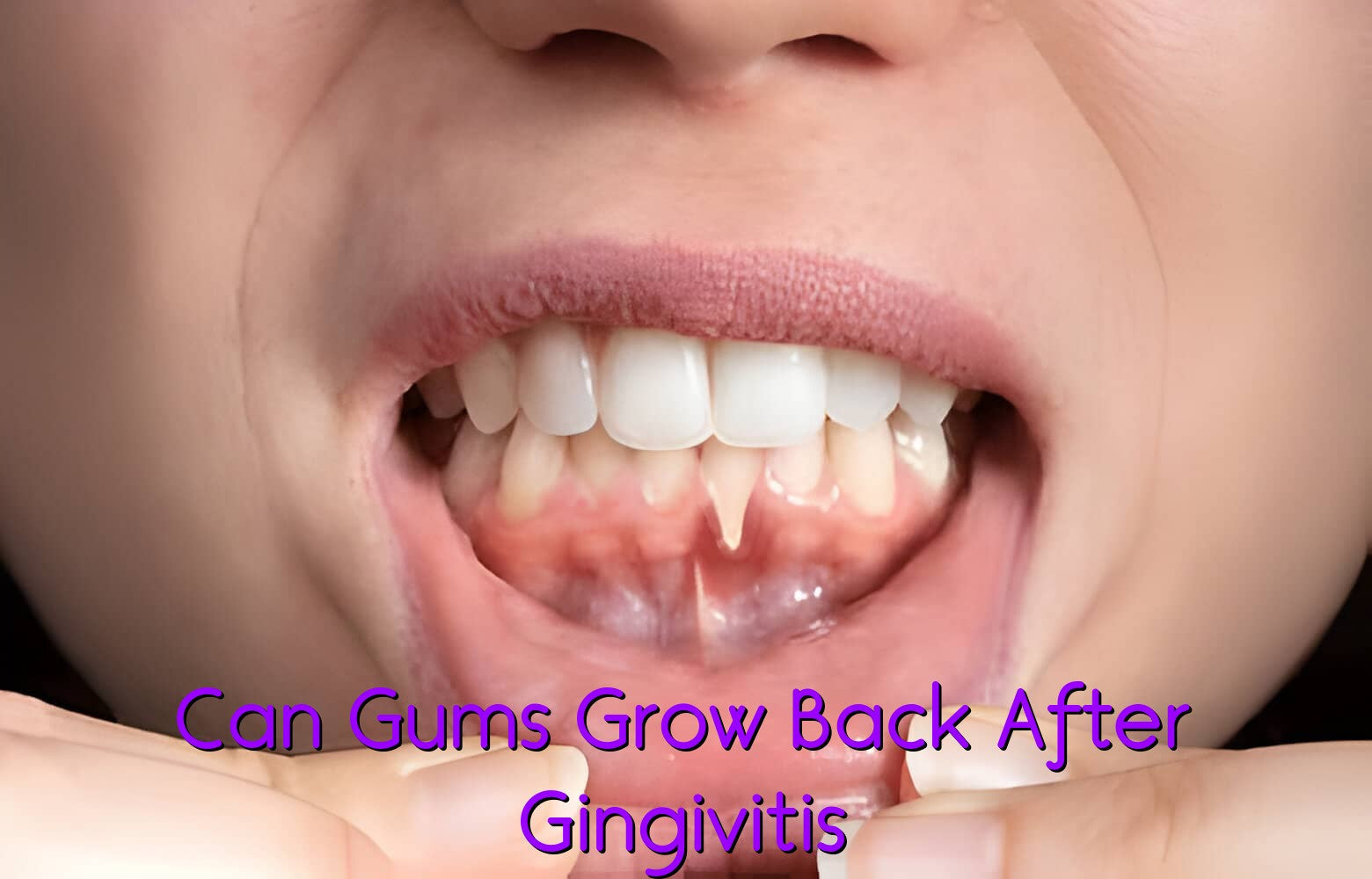If you've recently looked in the mirror and wondered, "Why is my gum growing over my tooth?", you're not alone. This isn’t one of those rare dental oddities that only affect a few people. It’s surprisingly common. But just because it’s common doesn’t mean you should ignore it. Gums growing over your teeth can signal anything from harmless irritation to a serious gum condition that needs intervention.
Let’s discuss everything you need to know: the causes, what’s normal, what’s not, when to worry, and most importantly - what you can actually do about it. We’ll also look at a natural gum disease solution that’s making waves for people dealing with poor oral hygiene, gum swelling, and sensitivity.
Is It Normal For Gums to Cover Teeth?
To a certain extent..yes. When permanent teeth are erupting (especially in children), the gum may temporarily appear to grow over them. However, in adults, gums growing over teeth isn’t typically a part of healthy oral aging.
One likely culprit? Gingival hyperplasia; a condition marked by an overgrowth of gum tissue. It’s not painful at first, which is why many people delay seeking help. But untreated, it can trap bacteria, worsen inflammation, and eventually lead to tooth loss.
So if you’re asking, “Why is my gum growing over my tooth?” and you’re not wearing braces, taking specific medications, or dealing with a new tooth coming in, you need to get to the root cause, fast.
What Causes Gums to Grow Over Teeth?
Let’s break this down into the most common causes, because this symptom is usually a result, not a standalone issue.
1. Poor Oral Hygiene
This is the #1 trigger. When plaque builds up and isn’t removed through brushing and flossing, it turns into tartar. Tartar irritates the gums and causes swelling, which can lead to the tissue covering more of the tooth surface. Over time, your gums essentially try to shield themselves, growing more than they should.
This is where inflammation meets gum overgrowth; an early sign of trouble that shouldn’t be brushed off (pun intended).
2. Gingival Hyperplasia
This is the technical name for abnormal gum overgrowth. It can happen due to:
-
Inflammation from plaque
-
Medication side effects (like phenytoin, cyclosporine, calcium channel blockers)
-
Systemic health issues like leukemia or hormonal imbalances
Gingival hyperplasia is one of the leading reasons people ask, why is my gum growing over my tooth?
3. Braces And Orthodontic Appliances
Gum tissue can be bothered by brackets and wires. The body reacts to this as it thickens and adds additional tissue, often the bottom of the teeth. This is a localized gum reaction, and it is common among individuals undergoing braces more than a year without additional cleaning attention.
4. Hormonal Changes
The blood flow to the gum tissues may be increased due to pregnancy, puberty or menopause leading to the swelling of the gums. They could even swell up and cover teeth which make the gum appear puffy or enlarged.
5. Plaque And Tartar Buildup
Dental plaque becomes tartar when it is not well removed. Tartar is deposited at the level of gums, irritates the tissue, and provokes the immune reaction, which leads to swelling and even tissue proliferation.
What Is Gingival Hyperplasia And How Is It Connected?
Gingival hyperplasia involves overgrowth of gums around the teeth. It can look like swollen gums, when it is inflamed, or it can begin as tiny tissue that grows over your teeth.
Although it can happen as a side effect of medication or as a consequence of hormonal changes, it is poor oral hygiene that is the greatest trigger. Plaque that contains bacteria will then inflame your gums. In an attempt to offer protection to your teeth, your body reacts by making too much gum tissue.
Note: the thicker your gum, the harder it would be to clean your teeth. And the cycle is repeated.
Signs Your Gum Growth Is More Than Just Irritation
So how do you know when it’s time to stop Googling and actually do something about it? Here are signs that your gum overgrowth is turning into a real issue:
-
Persistent bad breath
-
Bleeding when brushing or flossing
-
Puffy, reddish-purple gums
-
Tooth sensitivity
-
Gum pain
-
Loose or shifting teeth
If you're experiencing any of the above, it's more than just “extra gum”—you’re probably in the early stages of gum disease, and it’s time to act.
Why Poor Oral Hygiene Is the Gateway to Gum Overgrowth?
Poor oral hygiene is more than just skipping a few brushes or forgetting to floss. It’s the spark that sets off a chain reaction in your mouth, and one of the most overlooked reasons people end up asking, “Why is my gum growing over my tooth?”
When you don’t clean your mouth thoroughly, plaque starts to form. This sticky, bacteria-packed film clings to your teeth and gums. If you let it sit, it hardens into tartar, which can’t be removed by brushing alone. This tartar becomes a breeding ground for bacteria, irritating your gum tissue and triggering your body’s natural inflammatory response.

The Vicious Cycle of Neglect
Here’s where it gets worse: once your gums become inflamed, they start to swell. And in many cases, they don’t go back to their original shape. They grow thicker, sometimes creeping over your teeth in an attempt to “protect” themselves from bacterial invaders.
This extra gum tissue makes it even harder to clean properly, especially around the base of the teeth. You might miss spots when brushing or avoid flossing because it hurts or bleeds. And just like that - you’re stuck in a cycle of inflammation, overgrowth, and worsening oral health.
Silent Progression: Why You Might Not Notice at First
The tricky thing is that gum overgrowth caused by poor hygiene happens gradually. You might not feel pain right away. In fact, the only thing you may notice is that your smile looks a little puffier or your teeth look shorter. By the time discomfort kicks in, the problem is already well advanced.
Early gum disease (gingivitis) is reversible. But once it progresses to periodontitis, the overgrowth becomes harder to manage. That’s why catching the problem early, and understanding that it’s connected to how you care for your mouth, is so crucial.
Why Brushing Alone Isn’t Enough
Most individuals believe that they should just brush twice a day. Sadly, though, brushing cannot penetrate bacteria that are lurking below the gum line, particularly if you are already affected by overgrowth or inflammation. A comprehensive approach to oral care is what you require - brushing, flossing, professional cleaning, and selective cure to inflammation.
That’s where The Goodbye Company Gum Disease solution comes in. Its combination of anti-inflammatory Omega 3 and 9 oils, combined with strong natural antibiotics such as neem and clove, assists in removing swelling, and battling the bacterial overgrowth invisible to your toothbrush.
Your Daily Habits Matter More Than You Think
It might seem that missing a day of flossing or hurriedly cleaning in the morning is no big deal - but after some time, those little quirks add up to one serious issue - gum overgrowth. And when that occurs, there is a lot more than better brushing that can fix it.
Chances are that your gums are already inflamed, puffy or even covering part of your tooth. If this is true, then it is your wake up call to do something about it. Use effective oral health products and an all-natural gum care product to take care of improper oral health, and you will be able to reverse early signs before they cause irreversible damage.
How Inflammation Makes Your Gums Take Over Your Teeth
Here’s what’s happening beneath the surface:
- Bacteria invade the gumline.
- Your immune system sends in reinforcements.
- Inflammation swells the tissue.
- The tissue doesn’t shrink back - it stays thickened or even grows.
-
That’s when you notice: “Why is my gum growing over my tooth?”
And it’s not just unsightly. Inflamed gums create pockets where even more bacteria hide.
Comparison: Common Causes of Gum Overgrowth & Symptoms
|
Cause |
Symptoms |
Reversible? |
|
Poor oral hygiene |
Red, swollen gums growing over tooth |
Yes |
|
Gingival hyperplasia |
Tissue overgrowth, often painless |
Sometimes |
|
Medications |
Gradual thickening of gum tissue |
Often reversible |
|
Braces or dental devices |
Local swelling where brackets touch gum |
Yes |
|
Hormonal changes |
Puffy, tender gums |
Temporary |
|
Plaque and tartar buildup |
Irritation, bleeding, bad breath |
Yes |
What You Can Do to Stop Gum Overgrowth From Getting Worse
Let’s get proactive. If you're seeing early signs, here are the steps to take:
-
Brush with a soft-bristled brush twice daily
-
Use antibacterial mouthwash
-
Floss daily
-
Get a professional dental cleaning every 6 months
-
Add a targeted anti-inflammatory oral oil to your routine (we’ll cover that next)
This is your chance to get ahead of gum disease before it leads to bone loss or tooth damage.
The Best Natural Gum Disease Cure: Why Our Product Works
If you’ve been searching for a natural gum disease solution that actually does something, not just tingle your gums with mint - you’ll want to try The Goodbye Company Gum Disease solution.
This isn’t just a feel-good essential oil mix. It’s loaded with ingredients proven to support oral health, including:
-
Omega 3 and Omega 9 oils: These fatty acids reduce inflammation at a cellular level.
-
Neem oil: Known for its antimicrobial, antifungal, and healing properties.
-
Clove essential oil: Nature’s anesthetic with powerful antibacterial effects.
If you’re struggling with:
-
Bleeding gums
-
Gum pain
-
Sensitivity to hot or cold foods
…then this is the best natural gum disease cure to introduce into your routine.
Use it twice daily by massaging 2–3 drops along the gumline or applying it to floss before flossing. Users report less bleeding, better breath, and visibly healthier gums within weeks.
Will the Gum Go Back to Normal on Its Own?
Here’s the honest truth: not always.
If the gum has overgrown significantly, it may require professional treatment (scaling, laser therapy, or minor surgery). But if caught early and treated properly, you can reverse the swelling and stop further growth.
That’s why immediate action is crucial.
When to See a Dentist Immediately
Don’t wait if you notice:
- Severe tooth pain
-
Swollen face or jaw
-
Loose or shifting teeth
-
Pus or oozing
-
Difficulty chewing or brushing
Natural treatments help, but some conditions require urgent dental care to prevent long-term damage.
Daily Gum Care Routine to Prevent Overgrowth
If you’re wondering “Why is my gum growing over my tooth?”, one of the most important follow-up questions should be: What does my daily oral routine look like? Because let’s be honest - gum overgrowth doesn’t happen overnight. It builds up silently, day by day, from small missteps in your hygiene.
Morning Matters: Start the Day Right
Your gums are most vulnerable after a full night of bacterial buildup. That’s why your day should always start with brushing - no excuses. Use a soft-bristled toothbrush and fluoride-free natural toothpaste that’s gentle on sensitive gum tissue. Scrub at a 45-degree angle toward the gum line and spend at least two minutes. Rinse with lukewarm water to soothe inflamed tissue.
Follow this with flossing, even if your gums bleed a little. Bleeding is often a sign of inflammation, and that’s exactly what you’re trying to target.
Midday Maintenance: Don’t Let Bacteria Win
If you can, rinse after meals, especially after sugary or starchy food. Sugars feed harmful bacteria, accelerating plaque formation and gum irritation. A natural mouthwash or saltwater rinse can go a long way in calming the gums and disrupting bacterial growth.
For those on the go, consider travel-sized floss picks or dental wipes. You’d be surprised how much food debris gets trapped beneath slightly overgrown gum tissue.
Evening Reset: Your Most Important Oral Habit
Before bed is your chance to undo the day’s damage. Brush again, this time take your time, and don’t forget the tongue. Nighttime is when your saliva production drops, so bacteria are free to run wild while you sleep.
After brushing and flossing, apply a targeted gum treatment like The Goodbye Company Gum Disease solution. With Omega 3 and 9 oils infused with neem and clove essential oils, this formula is made to calm inflammation, combat bacteria, and reduce gum swelling naturally. It’s not just for gingivitis - it’s an ideal gum disease solution for anyone seeing early signs of gum growth, recession, or soreness.
Weekly and Monthly Habits That Make a Difference
A solid daily routine is non-negotiable, but there’s more you can do.
- Use a water flosser once or twice a week for deep cleaning under the gumline.
- Replace your toothbrush every 3 months or sooner if the bristles fray.
- Visit your dentist for cleanings at least twice a year.
-
Check your gums weekly in the mirror for any signs of overgrowth, redness, or change in shape.
These simple checks can help you catch gum overgrowth before it becomes a bigger issue.
The Goodbye Company Gum Disease: Your Routine’s MVP
If you’ve already noticed your gums creeping up your tooth, you need to act fast. This is where a gum care solution for poor oral hygiene can really shine. Our customers have seen a visible difference in their gum health by introducing The Goodbye Company Gum Disease into their daily routine.
It penetrates deeply, soothes sensitivity, and naturally supports gum tissue repair, without harsh chemicals or synthetic additives. Combine it with a consistent care routine, and you’re not just preventing gum overgrowth—you’re reversing it.
It’s Not Just About What You Do, It’s About Doing It Consistently
Even the best toothbrush in the world can’t help you if it’s sitting dry on the counter. If your gums are inflamed or growing over your teeth, you need more than good intentions - you need consistency. That means showing up every morning and night with intention, using the right tools, and addressing inflammation with natural, targeted care.
Because when it comes to your gums, the effort you put in today shows up in your smile tomorrow.
FAQs: “Why Is My Gum Growing Over My Tooth?”
Why is my gum growing over my tooth suddenly?
Usually due to inflammation caused by plaque, tartar, or hormonal changes. You should address it immediately before it worsens.
Can braces make my gums grow over my teeth?
Yes, irritation from braces can cause localized gum swelling and overgrowth.
Will the gum go back to normal once the cause is removed?
Sometimes. Mild overgrowth can shrink with proper care. Severe cases may need dental treatment.
Is it dangerous if my gum covers part of my tooth?
It can be. It traps bacteria and leads to further inflammation or even bone damage.
What is the best gum care solution for poor oral hygiene?
A combination of brushing, flossing, and using a product like The Goodbye Company Gum Disease, which contains anti-inflammatory and antibacterial oils.
Can gingival hyperplasia go away on its own?
If it's caused by medication or inflammation, reducing those triggers can help, but sometimes dental intervention is needed.
How do I stop my gums from covering my teeth again?
Maintain good oral hygiene, address inflammation, and use natural oil blends daily to support gum health.
Outlook
If you’re still asking, “Why is my gum growing over my tooth?” You now have your answer. It’s your body’s way of waving a big red flag. The good news? You have time to fix it.
Start today. Clean up your oral hygiene. Invest in a natural, powerful gum disease solution like The Goodbye Company Gum Disease oral solution to support healing. And don’t hesitate to book that dentist appointment if you need backup.


